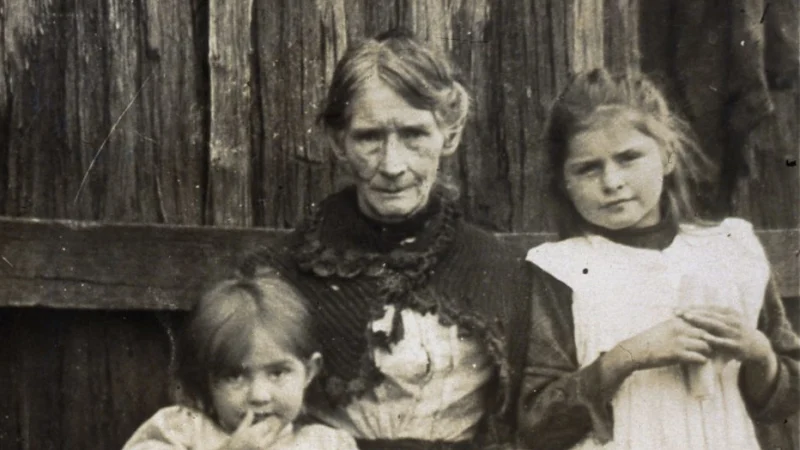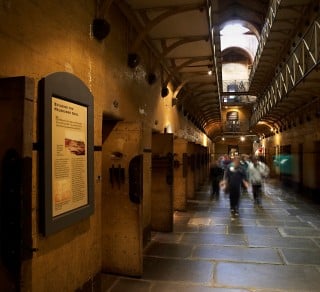Come and see the new interpretation at the Old Melbourne Gaol
Old Melbourne Gaol is celebrated its 50th year as a heritage site in 2022. It is a place anchored in the streetscape of Melbourne; the legal precinct dominates this part of Russell Street. Absorbed against the grounds of RMIT University, the bluestone Gaol sits amongst more modern architectural interventions. Before entering the Old Melbourne Gaol, however, I would recommend a walk around the outside of the extant building. Take a moment to look up and around. The original gate and courtyard allow us to imagine the experience of many prisoners, including women and children, entering the Gaol for the very first time to begin their sentences. If you walk towards the back of the remaining building, you will see some shards of whitewashed walls. They extend out from the sealed section of the exterior, jutting out on either side of long sealed doorways whose access is hampered by garbage bins and a fence. The students on the first floor of the RMIT building have the best view of these fragments; the only vestiges left of the Female Ward.
Before this wing was built women were housed with the male prisoners. Whilst afforded separate cells, they were nonetheless forced to endure the indignities and harassment that came with this arrangement. The Melbourne Gaol was built in 1847 and it wasn’t until 20 years later that the additional wing was completed. Elizabeth Scott, the first woman hanged in Victoria, was more than likely imprisoned in this new building. It was described as a place that was clean, with bright whitewashed walls. The floors were made of soft pine – a major difference from the men’s prison where the floors were unforgiving bluestone. Otherwise, it was almost a veritable reflection of the wing that still stands today. The Female Ward at Old Melbourne Gaol was demolished in the 1930s, and the Female Prison at Pentridge became the main site of incarceration for women and children.
It is now extremely hard to believe that a 3-year-old child could be sentenced to Gaol for being ‘idle’, which was Michael Crimmin’s fate in 1854, or that children were incarcerated for homelessness because society lacked the mechanisms or goodwill to offer them welfare or care for them. Heart wrenching experiences of poverty, loss, abuse, and abandonment followed many of these children into adulthood. After The Neglected and Criminal Children’s Act was introduced in 1864 reformatories and industrial schools began to open. Boys who committed crimes continued to be kept with the Gaol’s adult male population, however they were fed larger rations, educated, and were generally kept separate from the rest of the prison inmates. Corporal punishment consisted of the birch rather than the lash, and the cat’o’nine tails was reserved for those over 16. Girls were sent to reformatories, where they learnt domestic tasks to ensure rehabilitation and employment upon release.
In line with the recent upgrade of the Old Melbourne Gaol interpretation in 2020, the histories of women and children have now been revitalised with the installation of new panels. The second floor now features a suite of cells devoted to their histories. Adjacent to the gallows, the narrative starts with the story of execution and female imprisonment and ends with the social welfare work of Dr John Singleton and the Salvation Army. Researchers at the Old Melbourne Gaol, including staff, volunteers, and academics, have been tracing this history of women and children for decades. Previous installations honoured these stories and placed the experiences of women and children in context with the site. Drawing from this expertise, the new installation places these histories at the heart of the Gaol.
Find out more with a visit to Old Melbourne Gaol – purchase your tickets here.
This article was first published in the National Trust of Australia (Victoria) Magazine (Autumn 2023 issue)



